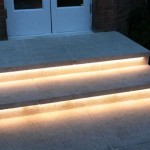How to Finish Wood for Outdoor Use
Outdoor wood projects, from decks and fences to furniture and playsets, face a constant battle against the elements. Sunlight, rain, snow, and temperature fluctuations can cause wood to crack, warp, rot, and fade over time. A proper finish helps protect your wood investments, extending their lifespan and enhancing their beauty. This article will guide you through the process of finishing wood for outdoor use, covering the essential steps, materials, and considerations.
1. Choosing the Right Finish
The first step is to select the appropriate finish for your project. Several options exist, each with its own advantages and disadvantages:
- Oil-based stains: These stains penetrate the wood, providing color and a degree of water resistance. They offer a natural look and are relatively easy to apply.
- Water-based stains: Similar to oil-based stains, water-based stains also penetrate the wood, offering a variety of colors. They are generally easier to clean up and have lower VOC emissions. However, they may not offer the same level of durability as oil-based stains.
- Solid color stains: These stains provide a solid color coat with better coverage than penetrating stains. They offer more protection from UV rays and weathering but can mask the wood's grain.
- Varnishes, sealants, and paints: These finishes provide a protective layer over the wood, offering varying levels of durability and aesthetics. Varnishes are clear, enhancing the wood's natural beauty, while sealants offer protection against moisture and UV rays. Paints provide a solid color coat with the highest level of protection.
The choice depends on factors like the wood species, desired aesthetic, level of protection required, and budget. Consider the following:
- Wood type: Certain wood species require specific finishes. For example, hardwoods like cedar and redwood naturally resist decay but may still benefit from a protective finish for added longevity.
- Desired look: Do you want to preserve the wood's natural color and grain, or do you prefer a solid color? This will influence your choice between stains, varnishes, or paints.
- Level of protection: If your project is exposed to harsh conditions, consider using a durable finish like a high-quality varnish or paint.
- Budget: Different finishes vary in cost. Be sure to factor this into your decision.
2. Preparing the Wood Surface
Proper preparation is crucial for a successful finish. A clean, smooth surface allows the finish to adhere properly and enhances its longevity. Here's a step-by-step preparation guide:
- Clean the wood surface: Remove dirt, debris, and any previous coatings with a brush, scraper, or chemical stripper. Use a mild detergent for general cleaning.
- Sand the wood surface: Sanding smooths the wood and creates a better surface for the finish to adhere. Start with coarse-grit sandpaper (80-120 grit) to remove rough spots and gradually move to finer grits (150-220 grit) for a smooth finish.
- Remove dust: After sanding, use a tack cloth or vacuum to remove any residual dust. Dust can prevent the finish from adhering properly, leading to imperfections.
- Apply wood conditioner (optional): For certain woods like cedar and redwood, a wood conditioner can help balance the wood's natural oils and improve the absorption of the finish.
3. Applying the Finish
Once the wood is properly prepared, you can apply the chosen finish. Whether using a stain, varnish, or paint, follow these general guidelines:
- Apply thin, even coats: Avoid overloading the brush or roller with finish. Thin coats allow for better penetration and drying, leading to a smoother finish.
- Work with the grain: For stains and varnishes, apply the finish in the direction of the wood grain to ensure even coverage and minimize brush strokes.
- Let the finish dry thoroughly: Follow the manufacturer's instructions for drying times. Allowing each coat to dry completely before applying the next is crucial for a durable and long-lasting finish.
- Apply multiple coats: Multiple coats of finish provide greater protection and a more even appearance. The recommended number of coats depends on the finish and desired level of durability.
Remember to wear protective gear, including gloves, eye protection, and a respirator, while applying finishes. Work in a well-ventilated area, and clean up spills immediately.
Finishing wood for outdoor use requires careful planning and attention to detail. Choosing the right finish, preparing the wood surface, and applying the finish correctly will extend your wood project's lifespan and enhance its beauty.

6 Ways To Treat Wood For Outdoor Use Pine And Poplar

How To Treat Wood For Outdoor Use 3 Methods Explained

What S The Best Outdoor Finish Wood

3 Ways To Finish Pine For Outdoor Use Wikihow

How To Build Finish An Outdoor Table Top Best Exterior Wood

How To Choose A Finish For An Outdoor Project Woodworking Blog S Plans

3 Ways To Finish Pine For Outdoor Use Wikihow

How To Finish Pine Wood For Outdoor Use

6 Ways To Treat Wood For Outdoor Use Pine And Poplar

3 Ways To Finish Pine For Outdoor Use Wikihow
Related Posts







